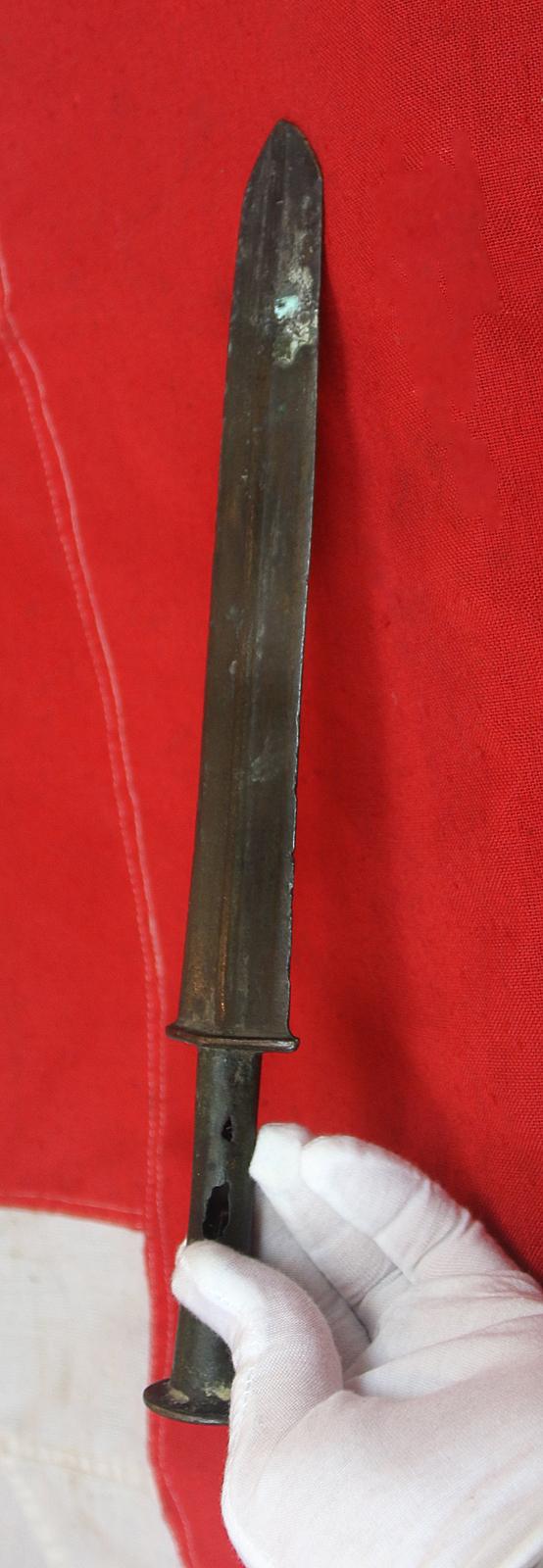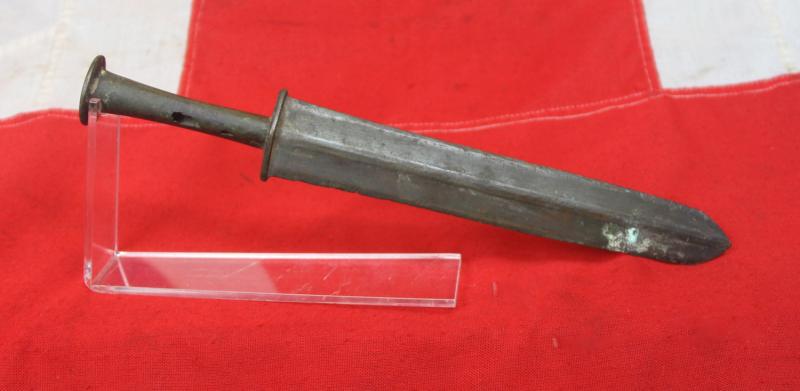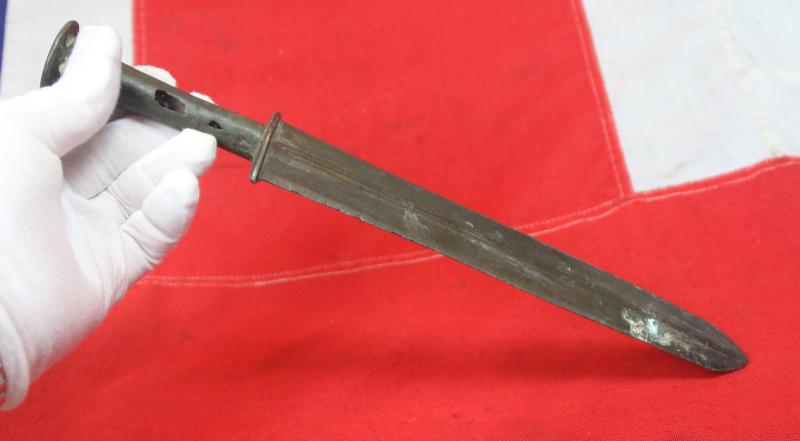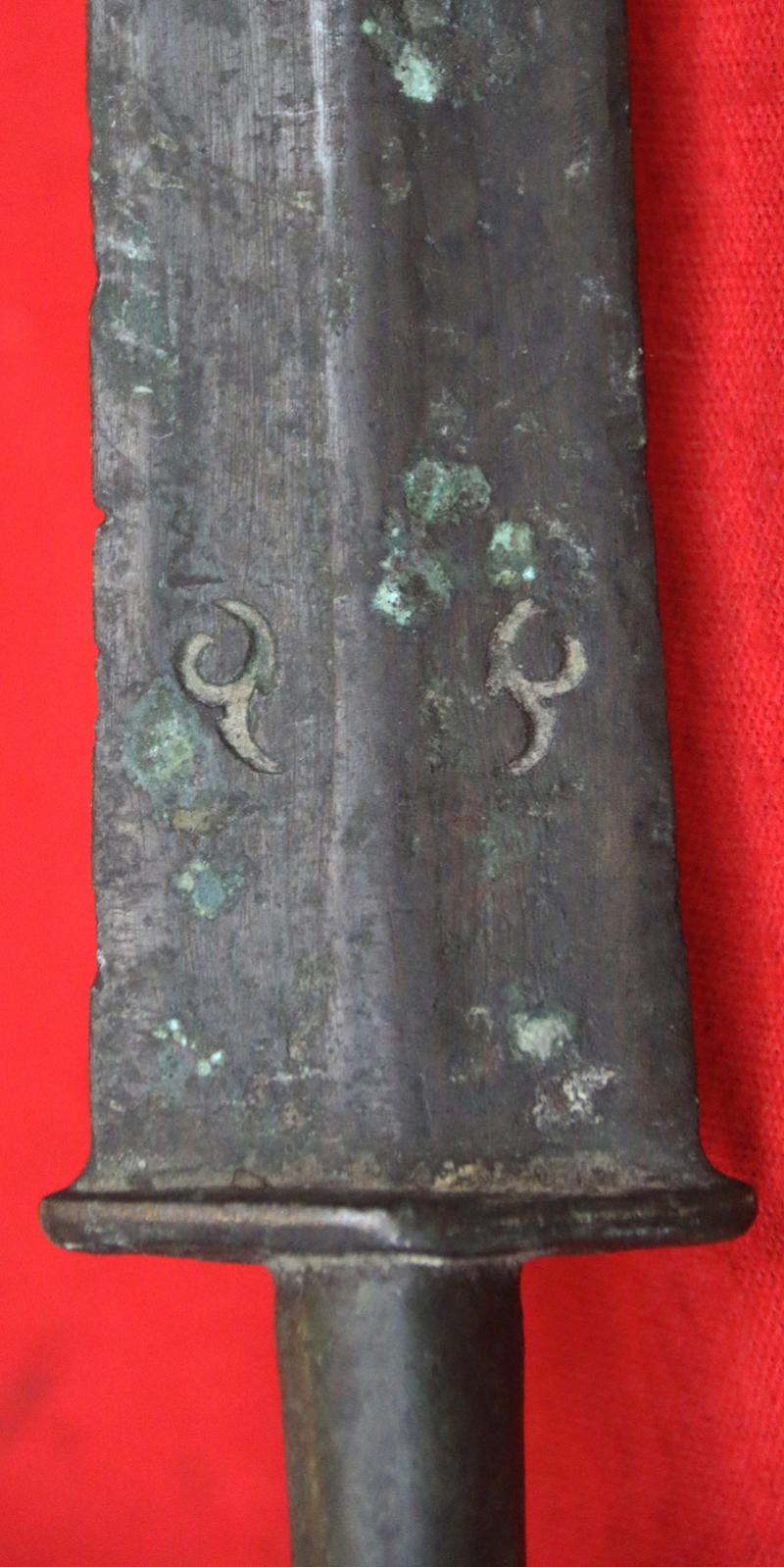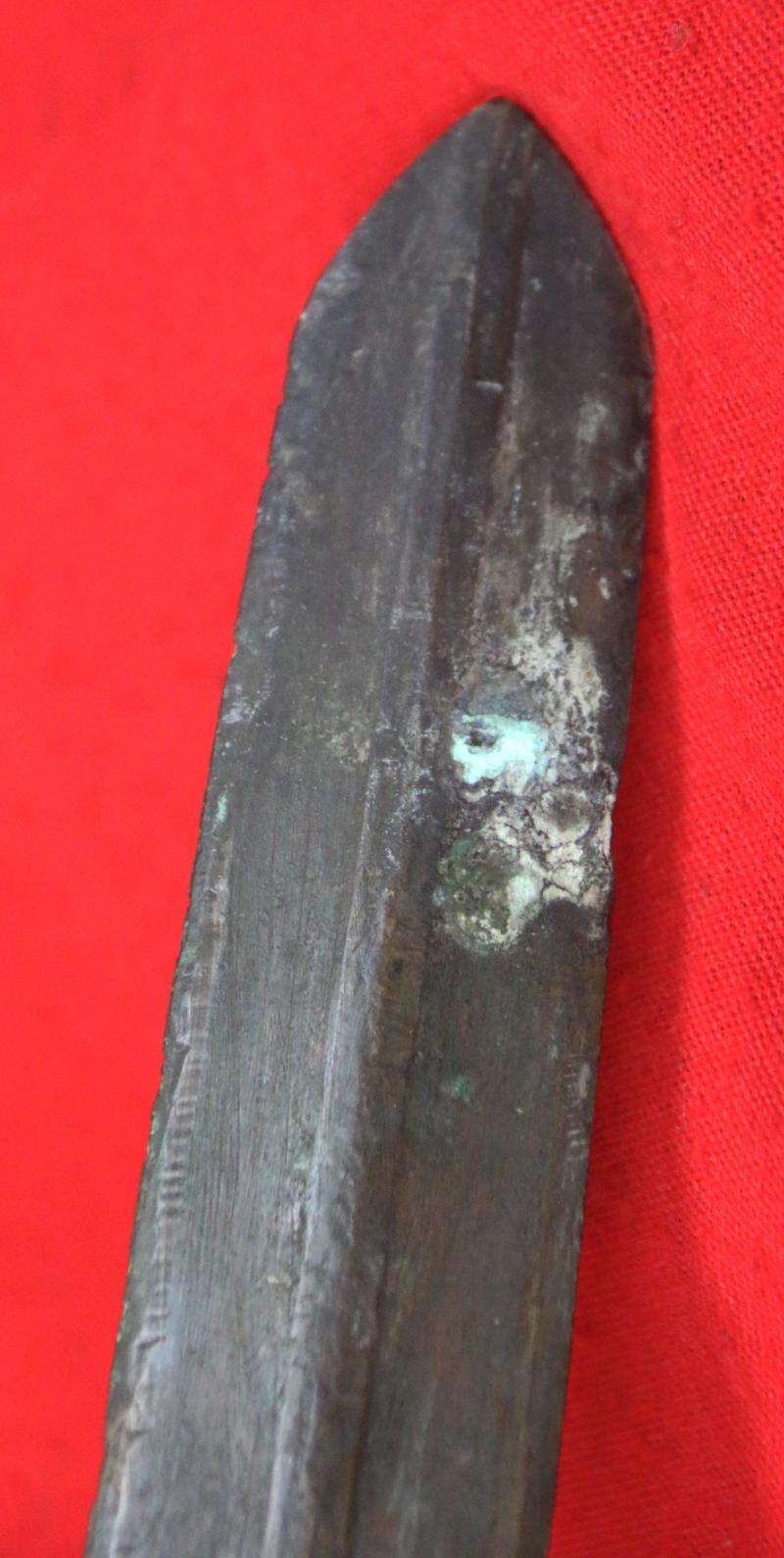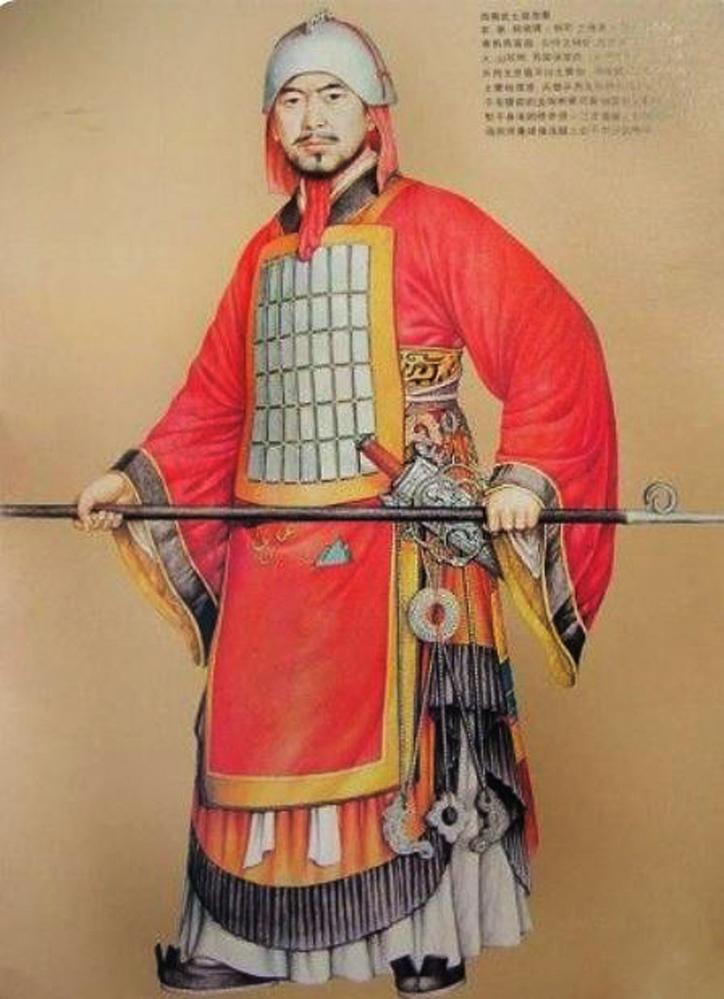An Ancient Archaic Chinese Dagger, From the Warring States Period to Han Dynasty circa 520 to 225 BC.
All bronze, graduating double edged blade, with central rib and slightly swollen tip. Cylindrical grip and flared disc pommel, showing the aperture to the grip. The blade bears two curlique stamps, one an inverted version of the other, that may be caligraphy kanji or symbolic, stylised decor
This is one of a stunning collection of original archaic bronze age weaponry we have just acquired and has now arrived. Many are near identical to other similar examples held in the Metropolitan in New York, the British royal collection, and such as the Hunan Provincial Museum, Hunan, China. Many pieces we acquired were sold for the part benefit of the Westminster Abbey fund, and the Metropolitan Museum fund
The Warring States Period lasted 254 years it started from 475 BC and ended in 221 BC. It was the last period of the Zhou Dynasty (1046–221 BC). The Zhou Dynasty era consisted of three periods: Western Zhou (1046–771 BC), the Spring and Autumn Period (770–476 BC), and the Warring States Period.
The Warring States Period began because the nobles stopped supporting the Zhou Dynasty, and Zhou's vassal states declared themselves independent from Zhou and fought for territory, becoming kingdoms or warring states.
The independence of vassal states was caused by the Zhou Dynasty’s system of enfeoffment: in order to strengthen the Zhou king’s power, nobles who contributed to the dynasty were awarded land.
Then vassal states formed. Vassal states could manage their own lands and raise their own armies. Once a vassal state became strong enough, its ambition went beyond being a small state.
The Warring States Period was dominated by 7 warring states.
Powerful vassal states constantly annexed smaller vassal states, and by the middle of the Warring States period, there were seven vassal states: Qin, Chu, Zhao, Wei, Han, Yan, and Qi.
Qin was in the far west, occupying today's Shaanxi Guanzhong, Hanzhong, southeast Gansu, central and eastern Sichuan.
Chu enjoyed the largest area. It dominated the south, with its core territory around the Yangtze River, controlling today’s Hubei, and part of Henan, Anhui, Hunan, Jiangsu, and Zhejiang.
Zhao was in the north, roughly most of today's Shanxi and Hebei and part of Inner Mongolia.
Wei was located in the middle, roughly part of today's Henan.
Han was situated in the middle too, occupying part of Henan and Shanxi.
Yan, in the northeast, controlled today’s Beijing, Liaoning, and Jilin.
Qi controlled the east, centred on the Shandong Peninsula.
315 mm long overall.
As with all our items it comes complete with our certificate of authenticity
Code: 24885

